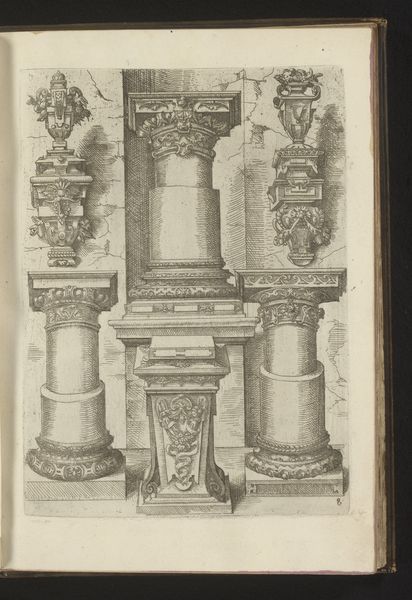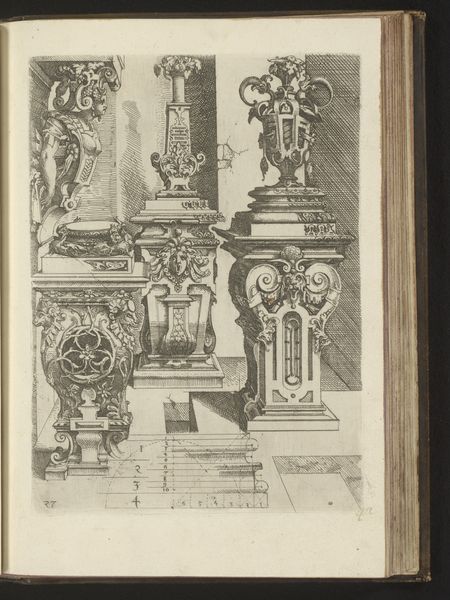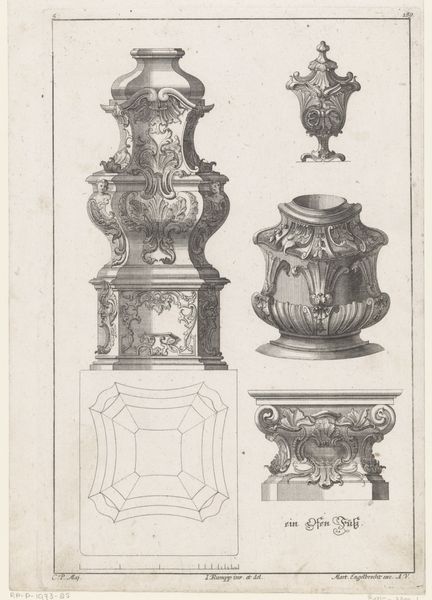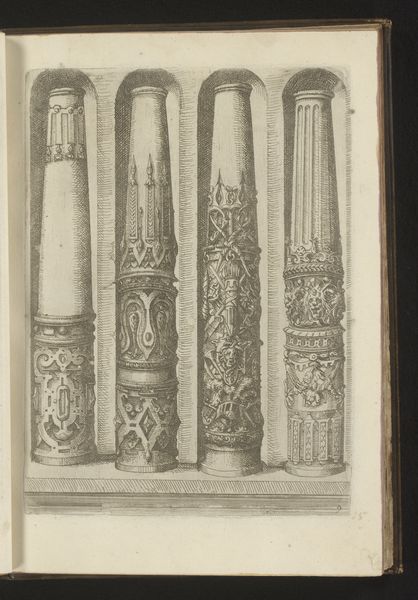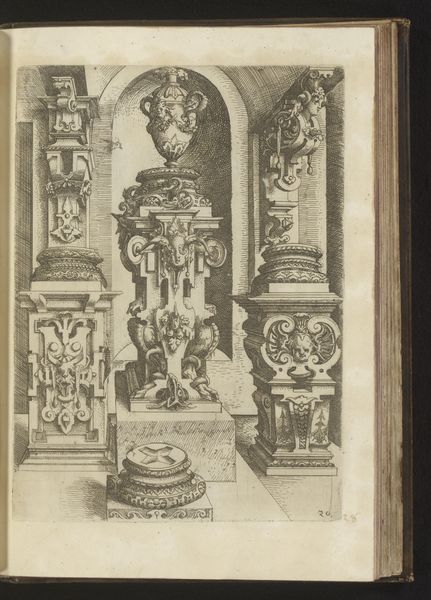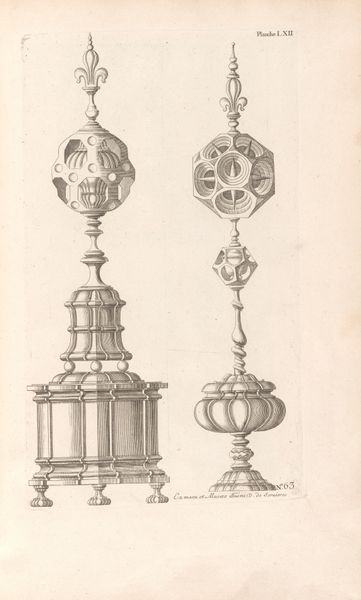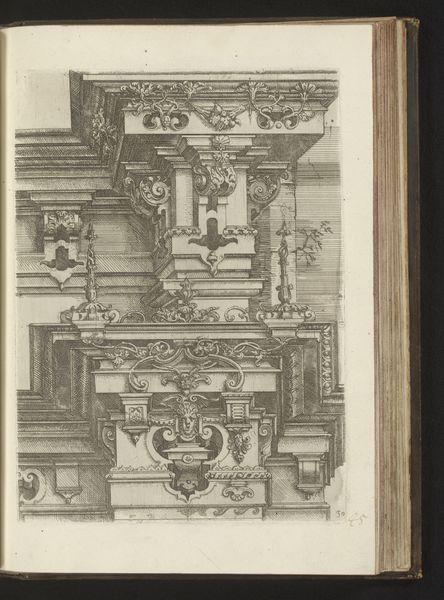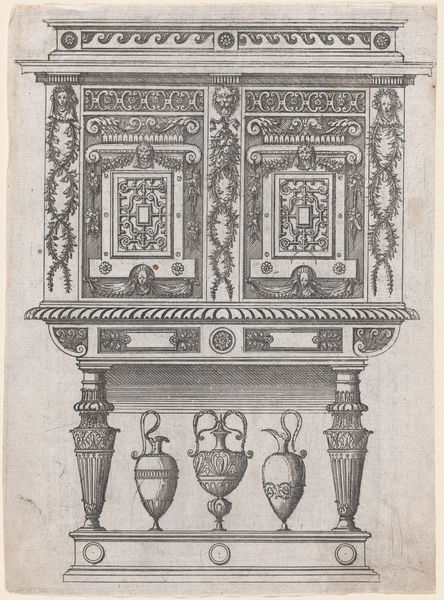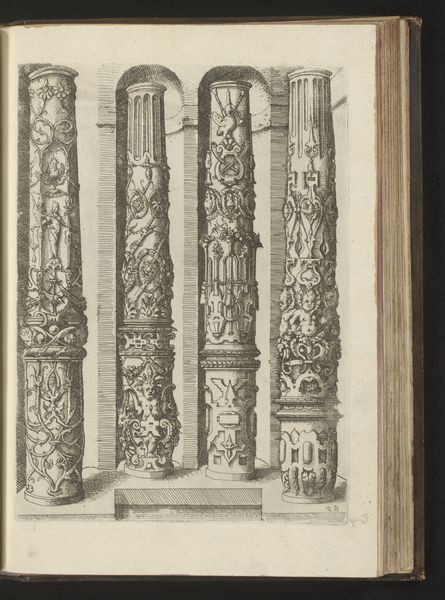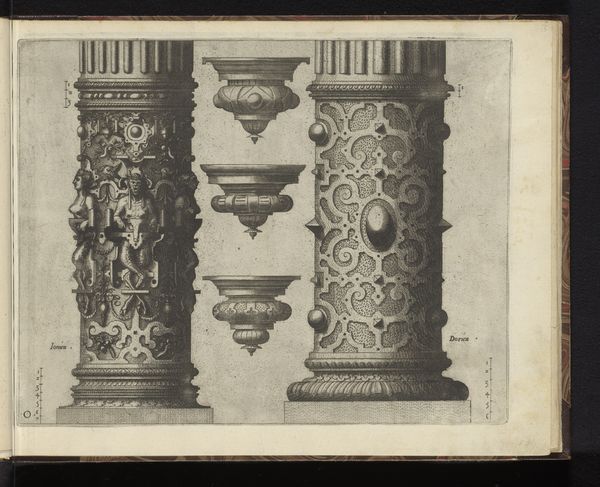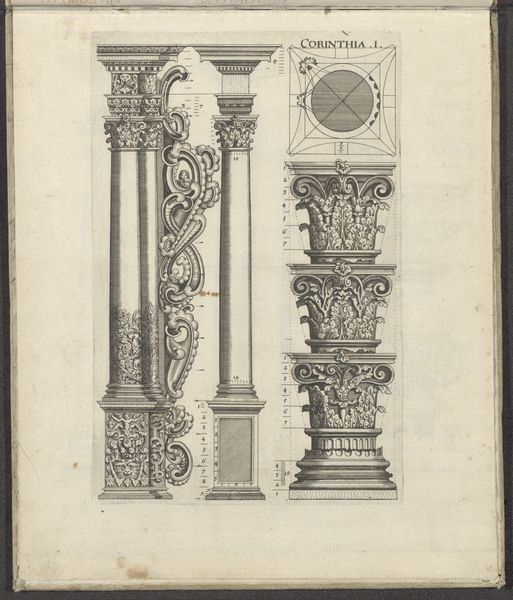
Zes composiete kapitelen gedecoreerd met harpijen, guirlandes en rolwerk 1593 - 1595
0:00
0:00
drawing, paper, ink
#
drawing
#
paper
#
11_renaissance
#
ink
#
geometric
#
column
#
academic-art
Dimensions: height 256 mm, width 190 mm
Copyright: Rijks Museum: Open Domain
Editor: This drawing by Wendel Dietterlin, created between 1593 and 1595, features six composite capitals, meticulously rendered in ink on paper. The level of detail is incredible, but also a bit overwhelming! What's your take on this display of craftsmanship? Curator: For me, it's about understanding this drawing not just as a representation, but as a document reflecting production and consumption within the late 16th century. Look at the material specificity: ink, paper, the techniques of drawing. These weren't readily available; they were commodities tied to specific economies. How do you think the materiality of this piece would have been perceived by its intended audience? Editor: That's a great point. I was focusing on the image itself, but considering the cost and accessibility of these materials puts it in a new light. Maybe it spoke to a certain level of luxury or exclusivity? Curator: Precisely! This drawing acted as a type of sample or catalog. Imagine the artist's labor invested in such detail and think about the patron, too. Whose labor would transform this drawing into actual three-dimensional capitals, and how would they interpret the artistic skill depicted in the rendering? What power dynamics do you see embedded in that transaction between artist, patron, and craftsman? Editor: I never considered it in that way. So, you’re saying that by looking at the materials and the implied production process, we can unpack the social relationships and power structures of the time? Curator: Exactly! It moves beyond aesthetics and allows us to really consider the broader socio-economic context of its creation and function. Editor: Wow, that's fascinating! Thanks for sharing that perspective. It’s given me a whole new appreciation for considering art beyond just its surface. Curator: Indeed, it’s about unveiling the intricate layers of meaning woven into the artwork through its very means of production.
Comments
No comments
Be the first to comment and join the conversation on the ultimate creative platform.
